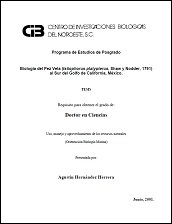Mineral content and biochemical variables of Aloe vera L. under salt stress
Autor
BERNARDO MURILLO AMADOR
MIGUEL VICTOR CORDOBA MATSON
JORGE ARNOLDO VILLEGAS ESPINOZA
LUIS GUILLERMO HERNANDEZ MONTIEL
ENRIQUE TROYO DIEGUEZ
JOSE LUIS GARCIA HERNANDEZ
Metadatos
Mostrar el registro completo del ítemResumen
"Despite the proven economic importance of Aloe vera, studies of saline stress and its effects on the biochemistry and mineral content in tissues of this plant are scarce. The objective of this study was to grow Aloe under NaCl stress of 0, 30, 60, 90 and 120 mM and compare: (1) proline, total protein, and enzyme phosphoenolpyruvate carboxylase (PEP-case) in chlorenchyma and parenchyma tissues, and (2) ion content (Na, K, Ca, Mg, Cl, Fe, P. N, Zn, B, Mn, and Cu) in roots, stems, leaves and sprouts. Proline and PEP-case increased as salinity increased in both parenchyma and chlorenchyma, while total protein increased in parenchyma and decreased in chlorenchyma, although at similar salt concentrations total protein was always higher in chlorenchyma. As salinity increased Na and Cl ions increased in roots, stems, leaves, while K decreased only significantly in sprouts. Salinity increases typically caused mineral content in tissue to decrease, or not change significantly. In roots, as salinity increased Mg decreased, while all other minerals failed to show a specific trend. In stems, the mineral concentrations that changed were Fe and P which increased with salinity while Cu decreased. In leaves, Mg, Mn, N, and B decreased with salinity, while Cu increased. In sprouts, the minerals that decreased with increasing salinity were Mg, Mn, and Cu. Zinc did not exhibit a trend in any of the tissues. The increase in protein, proline and PEP-case activity, as well as the absorption and accumulation of cations under moderate NaCl stress caused osmotic adjustment which kept the plant healthy. These results suggest that Aloe may be a viable crop for soil irrigated with hard water or affected by salinity at least at concentrations used in the present study."
Colecciones
Ítems relacionados
Mostrando ítems relacionados por Título, autor o materia.
-
PROMOCIÓN DEL PERIFITON PARA EL CULTIVO DE CAMARÓN BLANCO: HACIA UNA ACUICULTURA ECOLÓGICA
DOMENICO VOLTOLINA LOBINA; JUAN MANUEL AUDELO NARANJO; MARIA DEL ROSARIO PACHECO MARGES -
Suelo y Erosión
YOLANDA LOURDES MAYA DELGADO


